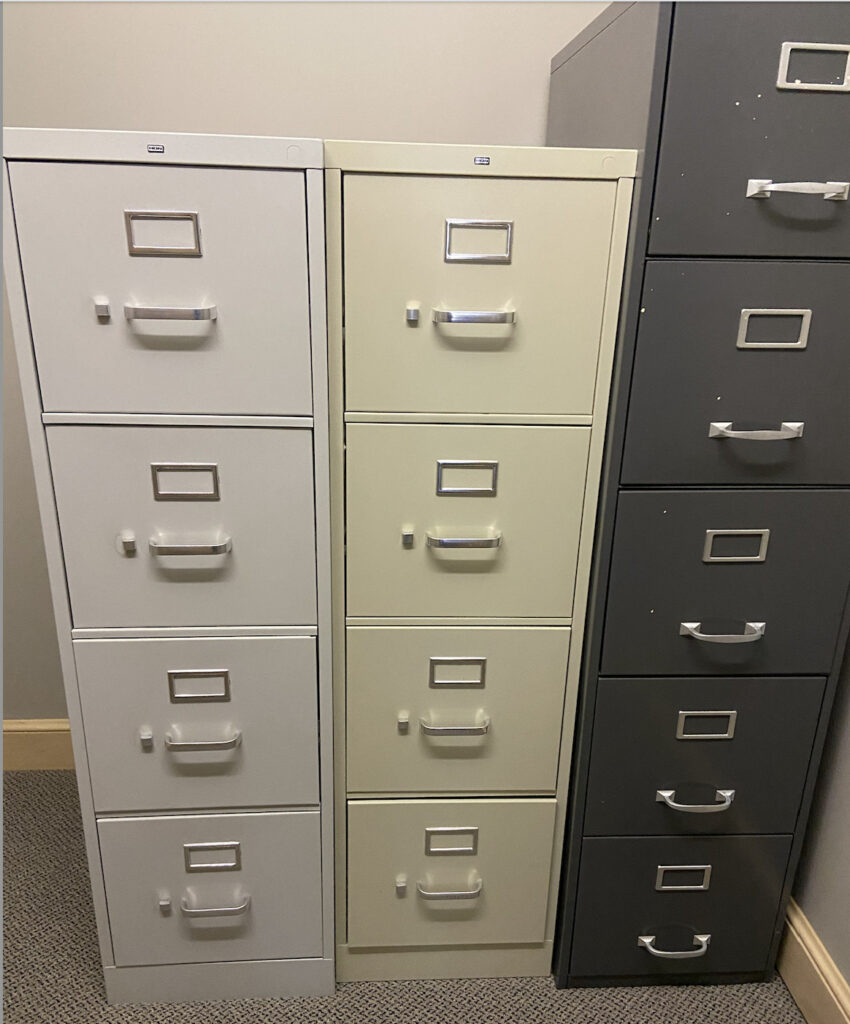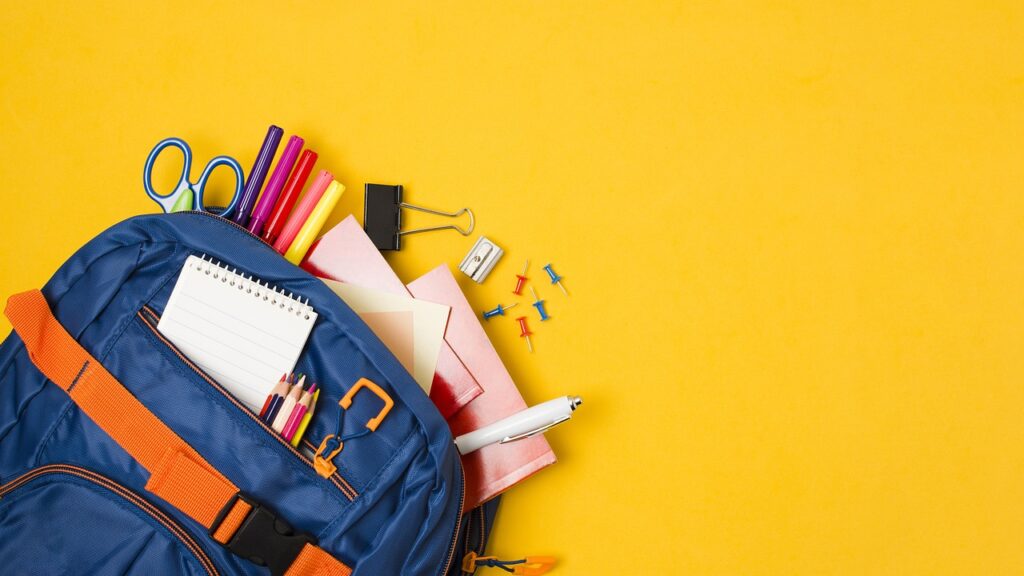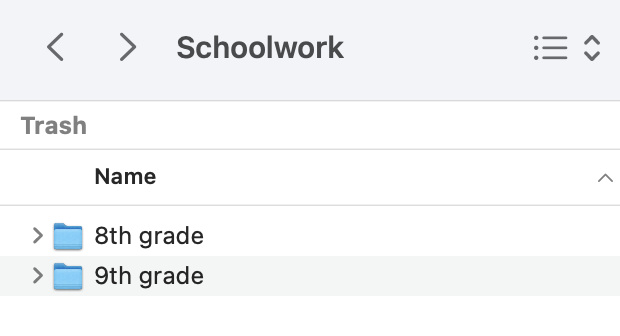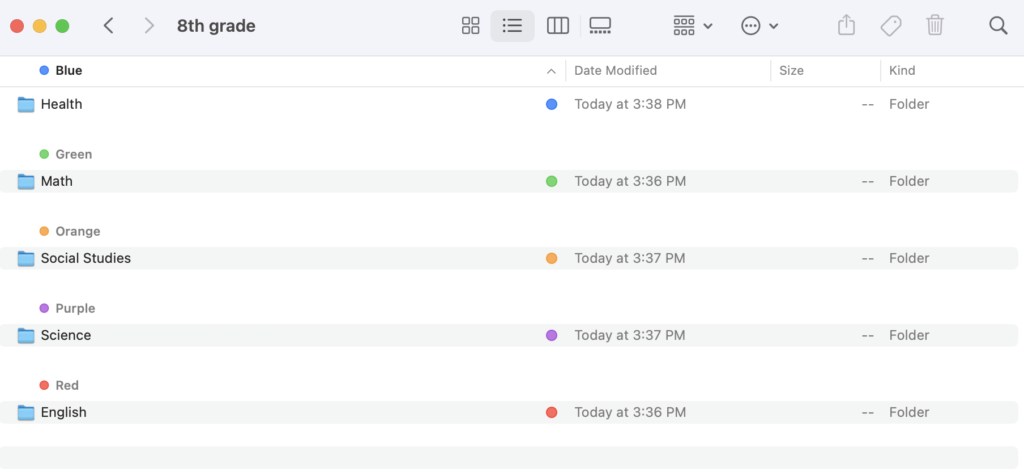Is it YOUR or YOUR CHILD’s Enemy too?
I am downsizing, moving, and relocating to another state in just a couple of weeks. So you know the story.

These are the file cabinets that were once filled with paper—stuff from my home, stuff from my job(s), stuff from my kids. I suspect NO ONE will be purchasing them. Paper remains the Enemy.
Image by Lori Josephson
I’ve had to go through every piece of paper, along with every item in our home accumulated over the past 23+ years. This is not some small task when one is an educator. Educators, I find, more than those engaged in other professions, tend to SAVE WAY MORE than others because one is always thinking, “I spent my own money on this” or “What if I need ______?” You fill in the blank. This is especially true if one taught many subjects and/or grade levels like I did since I managed a private tutorial and assessment practice for decades working with students who have dyslexia and other learning struggles. And I have a home office, so it was easy to keep saving. As I combed through my many materials, copies, and books (not to mention the recipe files kept prior to internet availability), I kept repeating, “Paper is my enemy!”
It got me thinking about our kids–I am always thinking about kids, after all.
When I worked as a classroom teacher, I routinely helped my special education students because paper was their enemy too. Every couple of weeks, I had them clean their desks and organize their 3 ring binders and folders to try to teach them how to organize their ‘work lives’ as best as they could. Crumpled papers, papers in textbooks and cubbies, missing papers, papers out of order—all of it all the time. Some students got better, while others continued to need adult assistance pretty much for the duration.
Image by Cottonbro Studios from Pexels

When conducting my tutoring practice, students brought their enormous backpacks filled to the brim, as many of them arrived either before or after school. I often felt as if I was working with my own renditions of Charles Schulz’s character Pigpen. Some of these students knew they needed help with organization, while others were simply oblivious. Many parents did not realize their children were attending school (their children’s full time jobs) in a state of chaos. Once again, I felt the need to spend time helping these students organize themselves to avoid catastrophe in the classroom and at home.

As you read this tale of woe, you might be thinking, “my child uses a tablet” or “my child uses a laptop.” I’ve worked in schools for decades now. Children are still overwhelmingly writing by hand on paper with a writing utensil. Children are still copying off of a whiteboard or Smart Board. Primary children require this kind of practice. They need to learn how to form letters, develop writing fluency, and do arithmetical calculations (remember, “show all your work”?). Writing by hand is part of the learning process. Spelling words by hand actually helps students’ reading. Typing is simply not the same. And while I am talking about typing, children need instruction so that they learn to type efficiently and effortlessly—this is not always provided in the school setting. Typing with one or two fingers does not bode well if one wishes to complete assignments efficiently. And, on top of that, does your child know how to organize their files on their tablets and laptops for easy retrieval? I’ve helped many a middle or high school student organize themselves on their tablets and/or computers. Trust me, this is important for school success.
Organization avoids late night melt downs for both you and your kids. So get organizing!
TIPS TO HELP YOUR CHILD(REN) MANAGE ALL THEIR PAPER…AND THEIR VIRTUAL PAPER
- Color Coding: Start the school year (it’s close to the start) with binders and folders color coded by subject. If your child has a text book, cover that text book in the same color or use the same color marker to label the text book. Some students do well using color coded pens/pencils/highlighters.
- Chronological Order: Have your child (or your students) put a name and date on every paper at the top and have them put these papers in chronological order, either going forward or backward. Some teachers have a preference and do honor their preference. This will be of great help when it’s time to study for quizzes/tests. Your kids can look back at what they learned and/or can redo math problems in preparation.
- Assignment Book/Calendar: Some schools provide assignment books with or without calendars. For some students, this works out just fine. But…for others, the space provided is simply just too small. It is important that you, as the parent, check for this and act accordingly. If you see your child unable to copy the assignment at all, or have difficulty, ACT NOW. Work with your child(ren)’s teacher(s) to come up with a better system so that your child(ren) is/are successful. Some students do well with having each subject color coded a week in advance (easy for you to do). By the time your child(ren) are in 3rd grade at the latest, they will have daily and long term assignments. It is important to keep a calendar displaying those long term assignments.
- Daily/Weekly/Semi-Weekly Cleanouts: Stay on top of things!! Go through your child(ren)’s folders, binders, assignment books regularly as your child(ren) need. Keep a 3 hole-punch handy. You will need it. You don’t want to live with your own ‘Pig Pen’. Engaging in this task will minimize stress and keep everyone on track.
- Tablets and Laptops: At the start of the school year, help your child(ren) to make folders for each subject. Put those folders in a larger folder entitled ‘Grade ___: Fall Semester’. When your child(ren) complete assignments, regularly check to see that they have placed the assignments in the correct location. Trust me, it will save time and heartache in the long run. Do note that if students are working on a report or term paper, they can save their sources in these files as well. A little organization goes a long way.
- Homework: Some students do best when they place their homework in a special folder/binder section rather than keep it within a folder/binder section. This way, they do not have to look around and it is always at the ready. Finished homework can then be filed within the subject. Talk with your child(ren) about what is optimal for them.
- Be a Good Role Model: Share with your child(ren) how you manage your work responsibilities, schedules, etc. Model how you clean out and organize your true files/virtual files. Make lists and check off completed tasks. Many, including me, find checking things off rewarding. This can become a family affair–it might not be as much fun as ‘movie night’, but everyone will feel less stressed in the long run.


Here are a couple of resources that may be worth a look and a share: Help Your Child Get Organized, The Messy Student’s Guide To Order
As a parent, you know your child(ren) best. Words of advice that have always held me in good stead: Do not assume anything! Many older children need the same organizational coaching as the younger ones. I suspect the above list of tips may be incomplete. If you have additional suggestions, please add them in the comments.
Well, I must end here because I need to continue packing…paper remains my enemy, as well as many other miscellaneous items!! Happy Fall!!

Image by StockSnap from Pixabay